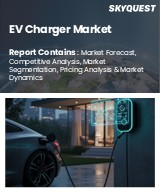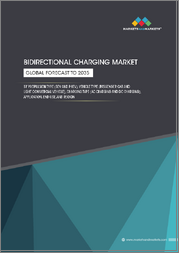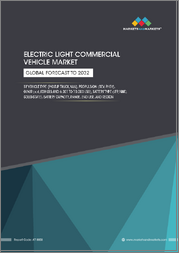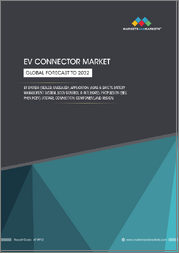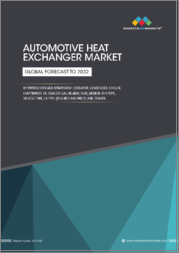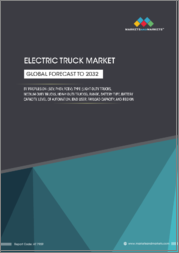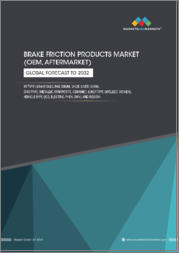
|
시장보고서
상품코드
1630897
세계의 플러그인 하이브리드차(PHEV) 시장 예측 : 자동차 클래스별, 자동차 유형별, 국가별, 기업 분석(2025-2033년)Plug-in Hybrid Electric Vehicles Market Global Forecast Report by Vehicle Class (Low Priced, Mid-Priced, and Luxury), Car Type (SUV, MPV & Vans, Midsize & Large Cars, and Small & Compact Cars), Country, and Company Analysis 2025-2033 |
||||||
세계 플러그인 하이브리드차(PHEV) 시장 규모
세계 플러그인 하이브리드차(PHEV) 시장 규모는 2024년 1,022억 6,000만 달러에서 2033년까지 2,582억 2,000만 달러에 달할 것으로 예측되며, 2025-2033년에 CAGR로 10.84%의 성장이 전망됩니다. 시장의 주요 촉진요인은 인터넷 보급, 디지털화, 기술 향상, 5세대(5G) 네트워크 보급, 게임 및 멀티미디어에 대한 수요 증가 등입니다. 가처분 소득 증가와 인구 증가로 인해 아시아태평양이 현재 가장 큰 시장 점유율을 차지하고 있습니다.
플러그인 하이브리드차 시장 성장 촉진요인
배터리 기술 개발
플러그인 하이브리드차(PHEV) 시장은 배터리 기술의 큰 발전으로 성장하며 왔으며, 배터리용량, 효율성 및 충전 속도의 지속적인 발전으로 PHEV의 주행거리와 매력이 향상되어 더 많은 구매자들에게 경쟁력 있는 선택이 되고 있습니다. 개선된 배터리 솔루션은 전기로만 주행할 수 있는 거리를 늘려 구매 희망자들의 주행거리에 대한 걱정을 덜어주고 있습니다. 또한 생산 비용이 낮아지고 배터리 수명이 길어짐에 따라 사람들은 플러그인 하이브리드차를 구입하는 경향이 높아져 시장 수요가 증가하고 있습니다. 배터리 기술의 발전으로 장기적인 소유가 더욱 비용 효율적이고 초기 투자 비용도 줄일 수 있습니다. 따라서 시장 확대를 유지하기 위해서는 배터리 기술의 발전이 필수적입니다.
정부 규제와 보상
플러그인 하이브리드차(PHEV) 시장은 정부의 규제와 인센티브에 의해 크게 지원되고 있으며, 일부 국가에서는 PHEV 구매 소비자에게 세금 공제, 보조금, 보조금과 같은 경제적 인센티브를 제공함으로써 친환경 교통수단으로의 전환을 장려하는 정책을 시행하고 있습니다. 정책을 시행하고 있습니다. 이러한 인센티브는 실질적인 구매 가격을 낮춤으로써 PHEV를 기존 자동차보다 훨씬 더 매력적으로 만들고 있습니다.
또한 온실 가스 배출을 줄이기 위한 법적 프레임워크는 제조업체들이 보다 친환경적인 솔루션을 개발하도록 강요하고 있습니다. 일정 비율의 전기자동차를 의무적으로 도입하도록 하는 정부 법률은 자동차 제조업체들이 PHEV 연구를 최우선 과제로 삼도록 보장하고 있습니다. 이러한 정책이 전 세계에서 계속 지지받으면서 PHEV 도입에 대한 인센티브가 더욱 높아질 것으로 예상되므로 향후 PHEV 도입이 크게 늘어날 것으로 예상됩니다.
환경의식 향상
플러그인 하이브리드차(PHEV) 시장은 대기오염과 기후 변화와 같은 환경 문제에 대한 관심이 높아짐에 따라 성장하고 있습니다. PHEV는 완전 전기자동차와 기존 가솔린 차량을 연결하는 역할을 함으로써 사용자가 연료를 완전히 버리지 않고도 저배출 가스를 이용할 수 있도록 도와주며, PHEV의 사용은 대도시 지역의 배기가스 규제 강화와 사람들의 환경 의식 향상으로 인해 이용은 대도시 지역의 배기가스 규제 강화와 사람들의 환경의식이 높아짐에 따라 증가하고 있습니다.
또한 세금 환급 및 보조금 프로그램 등 저공해 차량에 대한 정부의 인센티브 덕분에 PHEV는 구매 희망자들에게 경제적으로 매력적으로 다가오고 있습니다. 자동차 제조업체들은 규제 요건을 충족하고, 성능을 개선하고, 연비를 향상시키기 위해 제조 기술의 발전과 함께 하이브리드 기술에 대한 투자를 늘리고 있습니다. 따라서 플러그인 하이브리드차(PHEV)에 대한 수요는 전 세계 사람들의 환경에 대한 인식이 높아짐에 따라 지속적으로 증가할 것으로 예상되며, 이는 산업 성장 전망과 일치합니다.
플러그인 하이브리드차 시장이 해결해야 할 과제
복잡성 및 유지보수 비용
전기 모터와 ICE가 플러그인 하이브리드차량(PHEV)에서 볼 수 있는 듀얼 파워트레인을 구성하므로 운영이 복잡해지고 유지보수 비용이 증가할 수 있습니다. 두 시스템을 모두 유지 관리해야 하므로 PHEV는 수리 및 점검이 필요할 가능성이 높습니다. 예를 들어 배터리, 전기 모터, 연료 엔진, 기어박스는 모두 다양한 시점에 유지보수가 필요할 수 있으며, 총 유지보수 비용이 증가할 수 있습니다. 또한 두 파워트레인의 효율을 극대화하기 어렵고, 자동차의 성능과 연비에 영향을 미칠 수 있으며, PHEV 소유자는 최적의 운전에 필요한 특별한 지식으로 인해 기존 자동차보다 더 긴 학습 곡선을 겪을 수 있습니다.
세계의 플러그인 하이브리드차(PHEV) 시장에 대해 조사했으며, 시장 역학, 지역과 부문 분석, 주요 기업의 분석 등을 제공하고 있습니다.
목차
제1장 서론
제2장 조사 방법
제3장 개요
제4장 시장 역학
- 성장 촉진요인
- 과제
제5장 플러그인 하이브리드차 시장
제6장 시장 점유율
- 자동차 클래스별
- 자동차 유형별
- 국가별
제7장 자동차 클래스
- 저가격
- 중가격
- 고급
제8장 자동차 유형
- SUV
- MPV·밴
- 중형차·대형차
- 소형차·콤팩트 카
제9장 국
- 북미
- 미국
- 캐나다
- 유럽
- 프랑스
- 독일
- 이탈리아
- 스페인
- 영국
- 벨기에
- 네덜란드
- 터키
- 아시아태평양
- 중국
- 일본
- 인도
- 한국
- 태국
- 말레이시아
- 인도네시아
- 호주
- 뉴질랜드
- 라틴아메리카
- 브라질
- 멕시코
- 아르헨티나
- 중동 및 아프리카
- 사우디아라비아
- 아랍에미리트
- 남아프리카공화국
- 기타 지역
제10장 Porter's Five Forces 분석
제11장 SWOT 분석
제12장 주요 기업 분석
- Tesla
- BMW Group
- BYD Company Ltd.
- Mercedes-Benz Group AG
- Ford Motor Company
- General Motor Company
- Nissan Motor Co. Ltd
- Toyota Motor Corporation
Global Plug in Hybrid Electric Vehicle Market Size
Plug in Hybrid Electric Vehicle market is expected to reach US$ 258.22 billion by 2033 from US$ 102.26 billion in 2024, with a CAGR of 10.84% from 2025 to 2033. Some of the key reasons driving the market are growing internet penetration, digitization, technological improvements, the widespread use of fifth-generation (5G) networks, and the growing demand for gaming and multimedia. Due to rising disposable income and a growing population, Asia Pacific now has the biggest market share.
Plug in Hybrid Electric Vehicle Industry Overview
The growing customer desire for more environmentally friendly and fuel-efficient modes of transportation has led to a notable expansion in the Plug-in Hybrid Electric Vehicle (PHEV) market in recent years. PHEVs provide the versatility of running on both electricity and gasoline by combining an internal combustion engine with an electric motor and a rechargeable battery. Compared to conventional automobiles, this hybrid technique cuts emissions and lessens dependency on fossil fuels. The PHEV industry is growing quickly as governments around the world impose tougher pollution laws and provide incentives for clean energy vehicles. In order to extend battery life and lower costs, automakers are making significant investments in the creation of increasingly sophisticated and effective hybrid technology.
Growing consumer awareness of environmental issues and the growing use of electric vehicle (EV) technology are further factors contributing to the PHEV industry's expansion. PHEVs offer a workable option for customers worried about limited driving range or charging infrastructure, even if fully electric vehicles (EVs) are becoming more and more popular. Improvements in battery technology and increased economies of scale are addressing major issues including battery range restrictions and increased upfront prices. It is anticipated that the global PHEV market will keep growing, particularly as automakers increase the number of electric vehicles they provide and as governments enact laws that support environmentally friendly modes of transportation. Innovations in energy efficiency, fast-charging infrastructure, and consumer incentives will help fuel this expansion.
Growth Drivers for the Plug in Hybrid Electric Vehicle Market
Developments in Battery Technology
The market for plug-in hybrid electric vehicles, or PHEVs, has grown as a result of considerable advancements in battery technology. The range and attractiveness of PHEVs have increased due to ongoing advancements in battery capacity, efficiency, and charging speed, which have made them a competitive option for more buyers. Improved battery solutions reduce range anxiety for prospective purchasers by increasing driving range on electric power alone. Additionally, people are becoming more inclined to purchase plug-in hybrid cars as production costs come down and battery life increases, which is driving up market demand.Long-term ownership becomes more cost-effective due to advancements in battery technologies, which also reduce the initial investment cost. Therefore, the development of battery technology is essential to sustaining the market's expansion.
Government Regulations and Rewards
The market for plug-in hybrid electric vehicles (PHEVs) is fueled in large part by government rules and incentives. By providing financial incentives like tax credits, grants, and subsidies to consumers who buy PHEVs, several nations are putting policies into place to encourage the shift to more environmentally friendly modes of transportation. By lowering the effective purchase price, these incentives make PHEVs far more appealing than conventional cars.
Furthermore, manufacturers are being compelled to create more ecologically friendly solutions by legislative frameworks designed to lower greenhouse gas emissions, which is increasing the range and accessibility of PHEVs on the market. Government laws requiring a specific proportion of electric cars in fleets guarantee that automakers give PHEV research top priority. Future significant increase is anticipated as more incentive for PHEV adoption is anticipated as these policies continue to gain traction globally.
Raising Awareness of the Environment
The market for plug-in hybrid electric vehicles, or PHEVs, is primarily driven by growing concerns about environmental issues including air pollution and climate change. Cleaner transportation options are in high demand as governments and consumers grow more conscious of the negative impacts of conventional internal combustion engines. By acting as a link between fully electric and conventional gasoline-powered vehicles, PHEVs enable users to take advantage of lower emissions without entirely abandoning fuel.PHEV usage is increasing as a result of tighter emissions laws in metropolitan areas and more environmental consciousness among people.
Additionally, PHEVs are becoming more financially appealing to prospective purchasers thanks to government incentives for low-emission vehicles, such as tax refunds and grant programs. Automakers are investing more in hybrid technologies as manufacturing advances in order to meet regulatory requirements, improve performance, and increase fuel efficiency. The demand for plug-in hybrid electric vehicles (PHEVs) is therefore anticipated to continue growing as the world's population grows more environmentally conscious, which is exactly in line with the industry's growth expectations.
Challenges in the Plug in Hybrid Electric Vehicle Market
Complexity and Maintenance Costs
An electric motor and an internal combustion engine make up the dual powertrain found in Plug-in Hybrid Electric Vehicles (PHEVs), which increases operating complexity and may result in increased maintenance expenses. Because both systems need to be maintained, PHEVs are more likely to need repairs and servicing. The battery, electric motor, fuel engine, and gearbox, for instance, can all need maintenance at various times, increasing the total cost of upkeep. Customers might also find it difficult to maximize the efficiency of both powertrains, which could have an impact on the vehicle's performance and fuel economy. Owners of PHEVs may encounter a longer learning curve than those of conventional vehicles due to the specific knowledge needed for optimal operation, which could dissuade some buyers and make ownership even more difficult.
Charging Infrastructure
Plug-in Hybrid Electric Vehicles (PHEVs) can run on gasoline for extended periods of time, but regular charging maximizes their benefits. Public charging infrastructure accessibility and convenience, however, continue to be issues, especially in rural or underdeveloped places. Potential customers may be put off by a lack of charging stations, particularly if they depend on electricity for shorter excursions. The absence of convenient public charging choices becomes a major worry for customers who live in urban areas or apartment complexes without dedicated home charging stations. Because owners might worry about the hassle of locating suitable charging stations, this could lessen the allure of PHEVs. In order to promote broader adoption and guarantee that PHEVs fulfill their potential as a sustainable transportation option, it is imperative that charging infrastructure be expanded.
Mid-priced PHEVs offer affordability, performance, and sustainability, driving market growth
The global market for mid-priced plug-in hybrid electric vehicles is catering to a vast consumer base searching for a balance between affordability and superior electrified technology. Positioned among cost-friendly options and luxury counterparts, mid-priced PHEVs enchant cost-aware customers desiring efficient capabilities without compromising performance. This class witnesses a surge in recognition as automakers like Honda, Ford, and Hyundai introduce competitive trends, imparting an attractive combo of electrical performance and traditional driving range. The mid-priced PHEV class exemplifies a vital market niche, contributing extensively to the substantial adoption of electrified transportation globally.
SUVs dominate the PHEV market, combining versatility, sustainability, and consumer demand
The SUV car kind caters to various client alternatives, combining the practicality of an SUV with the efficient benefits of the PHEV technology. Renowned automakers, which include Tesla, Volvo, and Mitsubishi, have brought PHEV SUV models, offering sturdy electric-powered capabilities and spacious interiors. The SUV segment in the PHEV market is witnessing notable growth, driven by a growing demand for efficient options without compromising the commanding presence, application, and driving experience SUV lovers seek.
United States Plug in Hybrid Electric Vehicle Market
The market for plug-in hybrid electric vehicles (PHEVs) in the US is expanding steadily due to government incentives and growing customer interest in environmentally friendly transportation. Because of their strong emphasis on sustainability and capacity to run on both gasoline and electricity, plug-in hybrid electric vehicles (PHEVs) are a desirable choice for people who are worried about range anxiety. Government initiatives that promote the adoption of greener automobiles, such as tax incentives and fuel economy standards, boost the US market. Large automakers are making investments in PHEVs in order to broaden their product lines across a number of markets, especially the well-liked SUV and sedan segments. The increased awareness of environmental issues and fuel efficiency is anticipated to boost the expansion of the PHEV industry in the United States, despite obstacles such as high upfront prices and limited charging infrastructure.
Germany Plug in Hybrid Electric Vehicle Market
Germany has one of the most vibrant plug-in hybrid electric vehicle markets in Europe, thanks to its robust automotive sector and aggressive environmental policies. The German government provides a range of incentives, like as tax breaks and subsidies, to promote the adoption of PHEVs with an emphasis on lowering CO2 emissions and fostering sustainable transportation. Large German automakers like Mercedes-Benz, BMW, and Volkswagen have increased the range of PHEVs they offer, especially in the highly sought-after SUV and luxury markets. Even while PHEVs offer a transition from traditional cars to completely electric alternatives, issues like exorbitant upfront costs and a lack of charging infrastructure still exist. Nonetheless, it is anticipated that rising environmental consciousness and strong government backing will propel further industry expansion and establish Germany as a major force in the worldwide PHEV market.
China Plug in Hybrid Electric Vehicle Market
Strong government support, environmental regulations, and a move toward more environmentally friendly modes of transportation have made China's Plug-in Hybrid Electric Vehicle (PHEV) market one of the biggest and fastest-growing in the world. China is the largest automobile market in the world, and PHEVs are thought to be a crucial way to lower greenhouse gas emissions and urban air pollution. To encourage the use of electric and hybrid vehicles, the Chinese government provides significant incentives, such as tax breaks and subsidies. Particularly in the SUV and sedan markets, domestic automakers BYD, Geely, and NIO are rapidly growing their PHEV lineup. The rising demand for environmentally friendly cars and government support are anticipated to propel the PHEV market's continuous growth in China, notwithstanding obstacles like consumer awareness and charging infrastructure.
United Arab Emirates Plug in Hybrid Electric Vehicle Market
The market for plug-in hybrid electric vehicles (PHEVs) in the United Arab Emirates (UAE) is steadily growing due to rising environmental consciousness, government subsidies, and consumer demand for environmentally friendly modes of transportation. The UAE government has taken a number of steps to lower carbon emissions, including providing tax breaks, registration advantages, and carpool lanes for hybrid and electric cars. PHEVs provide an appealing alternative by fusing the range of a conventional internal combustion engine with the advantages of electric driving, making them perfect for long-distance travel in an area with large urban areas, even if completely electric cars (EVs) have received greater attention. Both domestic and foreign automakers, such as Audi, BMW, and Toyota, are increasing the range of PHEVs they sell, and the expansion of charging infrastructure is anticipated to increase acceptance even more in the years to come.
Vehicle Class - Market breakup in 3 viewpoints:
1. Low Priced
2. Mid-Priced
3. Luxury
Car Type - Market breakup in 4 viewpoints:
1. SUV
2. MPV & Vans
3. Midsize & Large Cars
4. Small & Compact Cars
Country - Market breakup in 26 viewpoints:
1. North America
- 1.1 United States
- 1.2 Canada
2. Europe
- 2.1 France
- 2.2 Germany
- 2.3 Italy
- 2.4 Spain
- 2.5 United Kingdom
- 2.6 Belgium
- 2.7 Netherland
- 2.8 Turkey
3. Asia Pacific
- 3.1 China
- 3.2 Japan
- 3.3 India
- 3.4 South Korea
- 3.5 Thailand
- 3.6 Malaysia
- 3.7 Indonesia
- 3.8 Australia
- 3.9 New Zealand
4. Latin America
- 4.1 Brazil
- 4.2 Mexico
- 4.3 Argentina
5. Middle East & Africa
- 5.1 Saudi Arabia
- 5.2 UAE
- 5.3 South Africa
6. Rest of the World
All the Key players have been covered from 3 Viewpoints:
- Overview
- Recent Development
- Revenue Analysis
Company Analysis:
1. Tesla
2. BMW Group
3. BYD Company Ltd.
4. Mercedes-Benz Group AG
5. Ford Motor Company
6. General Motor Company
7. Nissan Motor Co. Ltd.
8. Toyota Motor Corporation
Table of Contents
1. Introduction
2. Research Methodology
3. Executive Summary
4. Market Dynamics
- 4.1 Growth Drivers
- 4.2 Challenges
5. Plug In Hybrid Electric Vehicle Market
6. Market Share
- 6.1 By Vehicle Class
- 6.2 By Car Type
- 6.3 By Countries
7. Vehicle Class
- 7.1 Low Priced
- 7.2 Mid Priced
- 7.3 Luxury
8. Car Type
- 8.1 SUV
- 8.2 MPV & Vans
- 8.3 Midsize & Large Cars
- 8.4 Small & Compact Cars
9. Countries
- 9.1 North America
- 9.1.1 United States
- 9.1.2 Canada
- 9.2 Europe
- 9.2.1 France
- 9.2.2 Germany
- 9.2.3 Italy
- 9.2.4 Spain
- 9.2.5 United Kingdom
- 9.2.6 Belgium
- 9.2.7 Netherland
- 9.2.8 Turkey
- 9.3 Asia Pacific
- 9.3.1 China
- 9.3.2 Japan
- 9.3.3 India
- 9.3.4 South Korea
- 9.3.5 Thailand
- 9.3.6 Malaysia
- 9.3.7 Indonesia
- 9.3.8 Australia
- 9.3.9 New Zealand
- 9.4 Latin America
- 9.4.1 Brazil
- 9.4.2 Mexico
- 9.4.3 Argentina
- 9.5 Middle East & Africa
- 9.5.1 Saudi Arabia
- 9.5.2 UAE
- 9.5.3 South Africa
- 9.6 Rest of the World
10. Porter's Five Forces Analysis
- 10.1 Bargaining Power of Buyers
- 10.2 Bargaining Power of Suppliers
- 10.3 Degree of Rivalry
- 10.4 Threat of New Entrants
- 10.5 Threat of Substitutes
11. SWOT Analysis
- 11.1 Strength
- 11.2 Weakness
- 11.3 Opportunity
- 11.4 Threat
12. Key Players Analysis
- 12.1 Tesla
- 12.1.1 Overview
- 12.1.2 Recent Development
- 12.1.3 Revenue Analysis
- 12.2 BMW Group
- 12.2.1 Overview
- 12.2.2 Recent Development
- 12.2.3 Revenue Analysis
- 12.3 BYD Company Ltd.
- 12.3.1 Overview
- 12.3.2 Recent Development
- 12.3.3 Revenue Analysis
- 12.4 Mercedes-Benz Group AG
- 12.4.1 Overview
- 12.4.2 Recent Development
- 12.4.3 Revenue Analysis
- 12.5 Ford Motor Company
- 12.5.1 Overview
- 12.5.2 Recent Development
- 12.5.3 Revenue Analysis
- 12.6 General Motor Company
- 12.6.1 Overview
- 12.6.2 Recent Development
- 12.6.3 Revenue Analysis
- 12.7 Nissan Motor Co. Ltd
- 12.7.1 Overview
- 12.7.2 Recent Development
- 12.7.3 Revenue Analysis
- 12.8 Toyota Motor Corporation
- 12.8.1 Overview
- 12.8.2 Recent Development
- 12.8.3 Revenue Analysis






